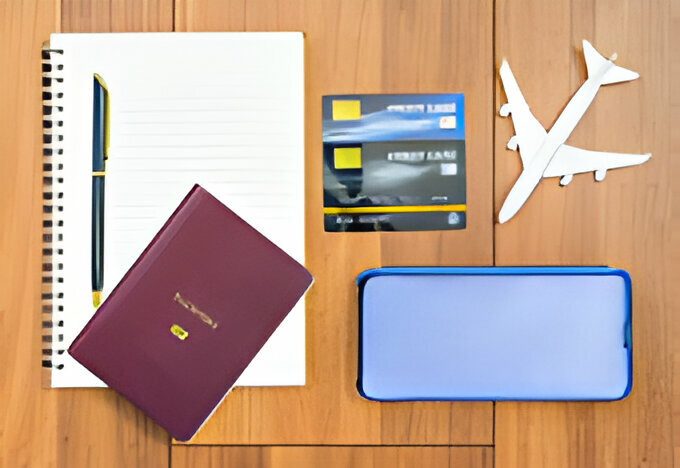How to Write a Cover Letter for a Job
A cover letter is a crucial part of a job application. It is often the first thing that a potential employer reads, and it can make or break your chances of getting an interview.
Writing a cover letter may seem difficult, but with the right approach, it can be a straightforward and effective way to showcase your skills and experience.
The purpose of a cover letter is to introduce yourself to a potential employer and explain why you are the best candidate for the job. It should be tailored to the specific position and company that you are applying to, highlighting your relevant experience and qualifications.
A well-written cover letter can demonstrate your enthusiasm for the job and show that you have taken the time to research the company and position.
Read also: Job in America With Free Visa
What is the Purpose of a Cover Letter?
A cover letter is a crucial document that accompanies a job application. Its primary purpose is to introduce the candidate to the employer and highlight their qualifications and skills. It is a chance for the candidate to demonstrate their enthusiasm for the job and explain why they are the best fit for the position.
A well-written cover letter should be tailored to the specific job and company. It should showcase the candidate’s relevant experience and skills and explain how they can contribute to the company’s success. A cover letter should not be a copy of the candidate’s resume but rather a complement to it.
The purpose of a cover letter is to persuade the employer to invite the candidate for an interview. It is the first impression that the candidate makes on the employer, and it can determine whether or not they are considered for the job. A cover letter should be concise, clear, and professional, and it should demonstrate the candidate’s writing and communication skills.
In essence, the purpose of a cover letter is to introduce the candidate to the employer, highlight their qualifications and skills, and persuade the employer to invite them for an interview. A well-written cover letter can make a significant difference in a candidate’s job search, and it is essential to take the time to craft a compelling and tailored cover letter for each job application.
Read also: Australia 5 Years Work Visa Requirements and Application Process
Structuring Your Cover Letter
Header and Salutation
The header of a cover letter should include the applicant’s name and contact information, as well as the date and the employer’s name and address. The salutation should be addressed to the hiring manager or the person responsible for reviewing the application. If the name of the person is not available, it is acceptable to use a general salutation such as “Dear Hiring Manager.”
Opening Paragraph
The opening paragraph of a cover letter should grab the employer’s attention and introduce the applicant. This can be achieved by mentioning the job title and the source of the job posting, as well as highlighting any relevant qualifications or experiences. It is important to keep this paragraph brief and to the point.
Body of the Letter
The body of a cover letter should expand on the applicant’s qualifications and experiences, and explain why they are a good fit for the job. This can be achieved by providing specific examples of how the applicant’s skills and experiences match the requirements of the job. It is important to keep this section organized and easy to read, by using bullet points or numbered lists.
Closing Paragraph
The closing paragraph of a cover letter should express the applicant’s enthusiasm for the job and their willingness to further discuss their qualifications. It is also important to thank the employer for their time and consideration. The applicant can also include their availability for an interview and their contact information.
Read also: Skilled Job List Australia: Top In-Demand Occupations
Tailoring Your Cover Letter to the Job
When applying for a job, it’s important to tailor your cover letter to the specific position you’re applying for. This shows the employer that you’ve done your research and are genuinely interested in the job. Here are some tips for tailoring your cover letter to the job:
Researching the Company
Before writing your cover letter, research the company you’re applying to. Look for information about their mission statement, values, and culture. This will help you understand what the company is looking for in an employee and what kind of work environment you can expect.
Include some of this information in your cover letter to show the employer that you’ve done your homework. For example, you might mention how your values align with the company’s or how you admire the company’s commitment to sustainability.
Highlighting Relevant Skills
When tailoring your cover letter, focus on highlighting the skills that are most relevant to the job you’re applying for. Look at the job description and identify the key skills and qualifications the employer is looking for. Then, think about your own experiences and skills that match those requirements.
Include specific examples of how you’ve demonstrated those skills in your previous work experience. Use bullet points or a table to make this information easy to read and understand.
Matching the Job Description
One of the most important aspects of tailoring your cover letter is matching the language of the job description. Use the same keywords and phrases that the employer uses in their job posting. This helps your cover letter get past any automated screening systems the employer may be using.
However, be careful not to simply copy and paste the job description into your cover letter. Use the language as a guide, but make sure to put it into your own words and tailor it to your own experiences and skills.
By tailoring your cover letter to the job you’re applying for, you’ll increase your chances of standing out to the employer and getting an interview. Remember to keep it clear, concise, and confident, and don’t forget to proofread for any errors or typos.
Read also: Remote Jobs in Canada
Finalizing Your Cover Letter
Proofreading and Editing
After drafting your cover letter, it is essential to proofread and edit it thoroughly. This step is crucial to ensure that your cover letter is free of any errors, typos, or grammatical mistakes. A well-written cover letter with no errors shows that you are detail-oriented and professional.
One way to proofread your cover letter is to read it out loud. This method can help you identify awkward phrasing, missing words, and other errors that you might miss when reading silently. Additionally, you can ask a friend or colleague to review your cover letter and provide feedback.
Cover Letter Format
It is crucial to follow the right format for your cover letter. The standard format includes a header, introduction, body paragraphs, and a conclusion. Ensure that your cover letter is well-organized, easy to read, and visually appealing. Use bullet points and short paragraphs to make it easier for the hiring manager to skim through.
When formatting your cover letter, ensure that you use a professional font such as Arial or Times New Roman. The font size should be between 10-12 points. Additionally, your cover letter should be one page long and not exceed two pages.
Read also: Jobs in US Post Office: Requirements and Application Process
Submission Guidelines
Before submitting your cover letter, ensure that you have followed all the submission guidelines. Read the job posting carefully to determine the preferred method of submission. Some employers prefer that you submit your cover letter and resume via email, while others prefer that you upload them on their website.
Ensure that you have included all the required documents, such as your resume, references, and any other supporting documents. Additionally, ensure that you have addressed the cover letter to the right person and spelled their name correctly.
In conclusion, finalizing your cover letter is crucial to ensure that you stand out from other applicants. Ensure that you proofread and edit your cover letter, follow the right format, and adhere to the submission guidelines.





